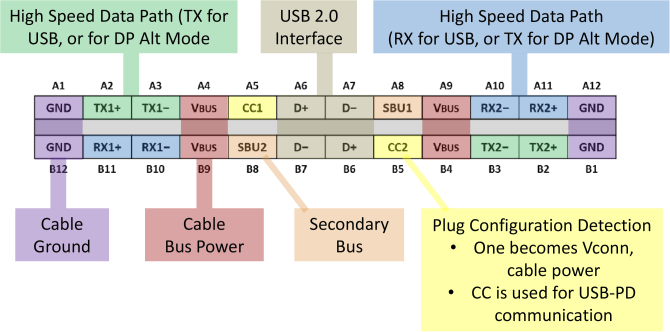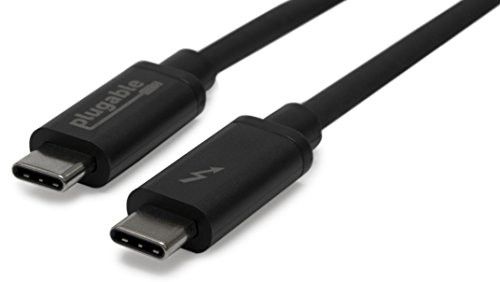The USB 3.0 Promoter Group has recently announced the upcoming USB 3.2 specification that defines multi-lane operation for compatible hosts and devices, hence doubling the maximum theoretical bandwidth to 20 Gbps.
Only USB Type-C cables were designed to support multi-lane operation, so other type of USB cables will not support USB 3.2, and stay limited to 10 Gbps. USB 3.2 will allow for up to two lanes of 5 Gbps, or two lanes of 10 Gbps operation, so if you want to achieve 20 Gbps transfer rate, you’ll need a USB Type C cable certified for SuperSpeed USB 10 Gbps, beside hosts and devices that comply with USB 3.2.

Anandtech explains that two high speed data paths are available in USB type C connector as shown above, which are also used for alternate modes, and the USB 3.1 standard makes use of one of those paths for 10 Gbps transfer, and the other path for alternate mode, but USB 3.2 allows for both to be used for 10 Gbps transfers hence achieving up to 20 Gbps. If both paths are used for alternate modes, then transfers will be limited to USB 2.0 speeds (up to 480 Mbps).
That’s a good development, but it will be further be confusing to consumers, as most companies do not clearly explain the capabilities of their USB type C interfaces or/and cables. USB type C cables can be made for USB 2.0 (480 Mbps), USB 3.0 / USB 3.1 Gen 1 (5 Gbps), or USB 3.1 Gen 2 (10 Gbps), and only the latter will support USB 3.2.

Jean-Luc started CNX Software in 2010 as a part-time endeavor, before quitting his job as a software engineering manager, and starting to write daily news, and reviews full time later in 2011.
Support CNX Software! Donate via cryptocurrencies, become a Patron on Patreon, or purchase goods on Amazon or Aliexpress





